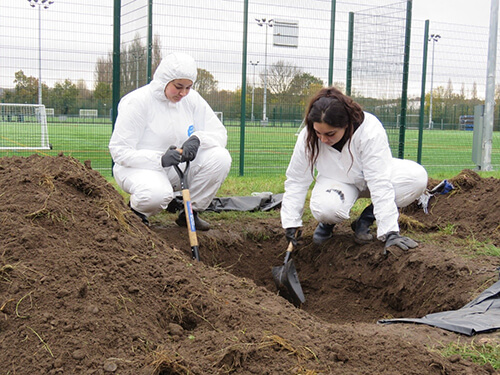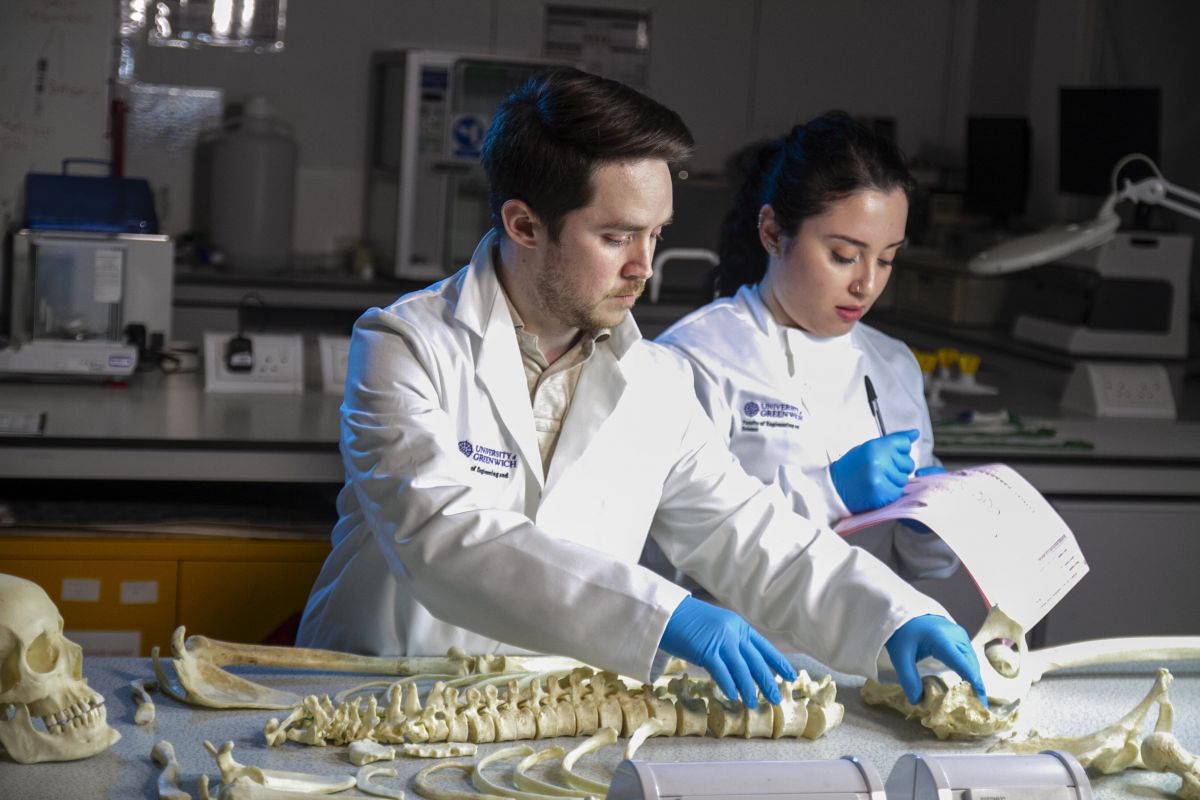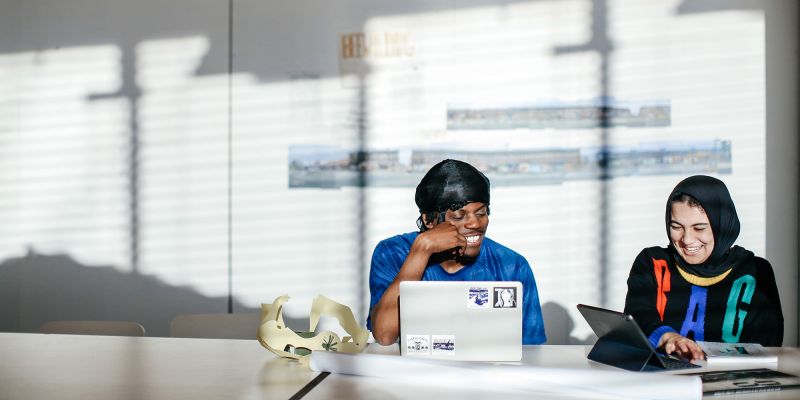
Final year University of Greenwich Forensic Science students spent a crisp day in December digging out imitation bones and bits of clothing from a 2.2-acre site. Forensic Science Lecturer Sammi Taylor and Forensic Technician Luke Taylor had already buried the bones in the soil on the university’s Avery Hill campus earlier in the week for the students to detect.
As part of a new module open to students for the first time – Forensic Anthropology and Archaeology – the group’s goal was to find the site, and then, in teams of two, excavate large graves to locate the bones and bring them out safely.
Students quickly identified where the bones were hidden from giveaways in the soil – but that was the easy part.
Now at the site, the hard work began. Students found the manual labour needed for the task, coupled with the cold weather they needed to work in meant the project was insightful into the real world of forensics. Tamzin Bailey thought it well worth the effort,
All of the chances we have at practical work are amazing, but today was invaluable.
Connections with industry
With time ticking, Sammi and Luke called in reinforcements from their connections – two external archaeology professionals– and, with the help of the certified Archaeologist and Anthropologist guest lecturer already present, the students were able to finish their graves and collect all the bones by the end of the session.
Sammi knows having the external consultants on-hand to guide students isa great benefit to students. “They learn a lot from them, and it’s a great opportunity for students to network.” They will now be able to take this experience forwards into their careers once they graduate. Katherine Bartlett said “Now we can say we have actually done this, and it looks good for employers.”
Students also understood the reality of what they were doing, and what work like this means in the real world. Asked why she chose this course, Janice Cartwright said “The goal of all this is to get justice for the individual, and closure for the family.”
The group will now be using the imitation remains they have excavated to put together a skeletal biological profile. This will involve coming to conclusions about the individual the bones may have belonged to. Student Jessica Greenwood explains one thing the group will look for is fusions of the bones to find out the individual’s age range.
A powerful feeling
The module was a popular choice this year, with 40 out of 56 students choosing to study it as part of their final year modules. Sammi offers one reason why this might be. “They see elements of forensic archaeology and anthropology on television, and so there are misconceptions that it’s somehow a glamorous subject.” She says she is always honest with prospective students and tells them the subject definitely isn’t glamorous!
Crime scene investigation itself is only one part of forensic science, which is grounded more in the sciences. Luke explains: “Forensic Science is taking Biology and Chemistry and applying them to a crime scene. Evidence that has been gathered and analysed needs to then be presented in a way that will be useful to a criminal investigation.”
If you’re helping to identify a victim and solve a crime that has traumatised a family – sometimes for years and years – that’s a powerful feeling.
Practical techniques
In the final year of this course, new techniques are explored, and students rely less on their textbooks and more on what they are learning through practical work, which includes working in mock crime scene facilities on the Medway Campus. Students also complete a final year project on a topic of their choice.
Another practical project this group were involved in was a mock scattered remains dig, which was assessed. Dressed in PPE, they needed to secure an area on Medway’s Pembroke lawn and then search for scattered evidence. The area was treated as a real crime scene, with anyone entering it being stopped and documented.
But students are enjoying the challenges in front of them. Jessica says she is enjoying the hands-on elements of her course and is developing a better understanding of bones and the human body.
Jessica didn’t even think she would be able to study this course. “I liked the idea of studying Forensic Science at Greenwich, but I didn’t think I had the right subjects at A level for it. Then I found out I could apply to study it with a foundation year.”
Tangible experience
Sammi and Luke are hoping to bury the bones for next year’s remains dig very soon. This would allow grasses to grow back over the site, which would give their students an even more realistic scene to work with and gain experience from.
But would this year’s group go shovelling in the cold again?
Student Maisie Orange says she “would absolutely do the day again if given the chance.”



